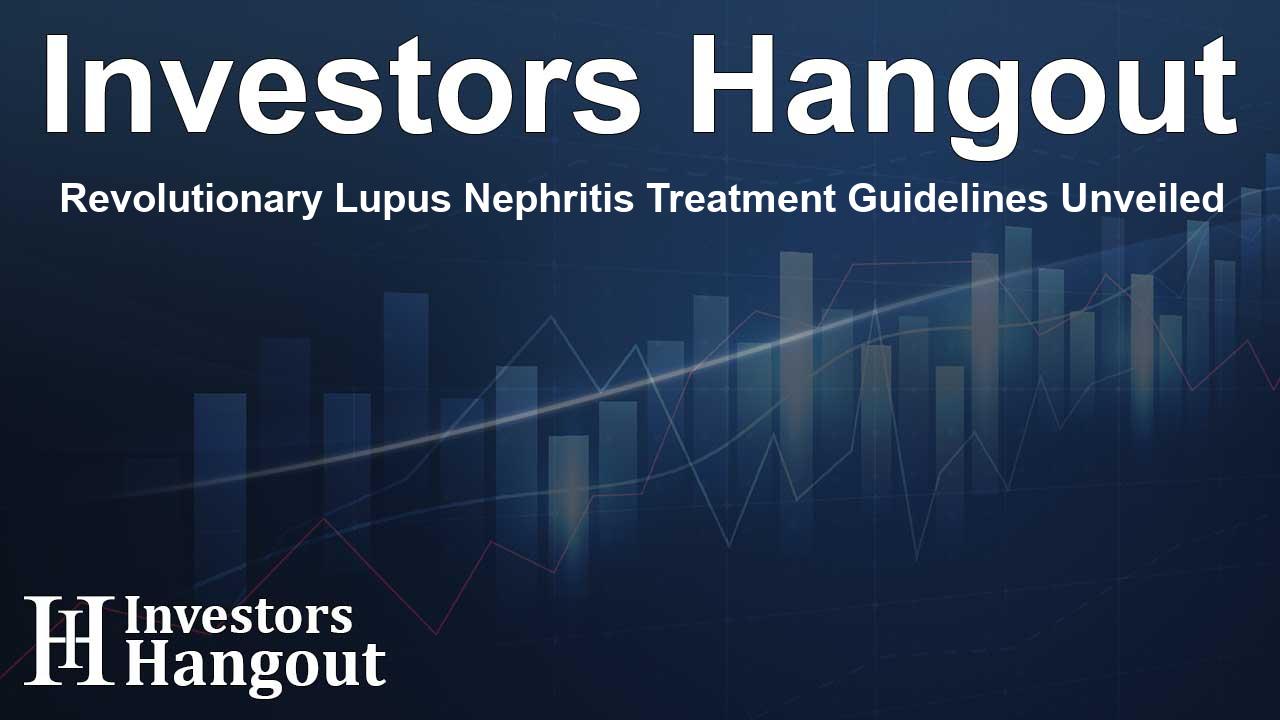Revolutionary Lupus Nephritis Treatment Guidelines Unveiled

Revolutionary Lupus Nephritis Treatment Guidelines Unveiled
A significant update concerning Lupus Nephritis (LN) management was recently presented at the annual event of the American College of Rheumatology (ACR). This update marks a pivotal moment in the treatment landscape, focusing on advances that have emerged since the last guidance was issued in 2012.
Overview of the Updated Guidelines
The new guidelines introduced by the ACR offer fresh insights into the screening, treatment, and ongoing management of LN, reflecting the enormous strides made in this area. Particularly noteworthy is the conditional recommendation for triple therapy, which combines mycophenolate mofetil (MMF), glucocorticoids, and a choice between Benlysta or a calcineurin inhibitor for specific patient profiles.
Significance of Triple Therapy
According to recent analyses, triple therapy is strongly suggested for newly diagnosed patients with ISN Class III or IV +/- V disease, those who have experienced a flare, or those with active disease. For patients facing pure Class V disease combined with notable proteinuria, this combination remains the cornerstone of treatment. Anecdotally, data indicates that a portion of physicians still hesitates to recommend this aggressive approach, with reliance on clinical indicators to determine the timing for initiating triple therapy.
Current Treatment Trends
Insights from a quarterly tracker reveal that a mere 54% of rheumatologists and 37% of nephrologists are opting for this proactive approach upon initial diagnosis. The prevalent tendency among some specialists to delay the commencement of triple therapy until after a first-line treatment failure may lead to suboptimal patient outcomes.
The Role of Proteinuria
The guidelines place significant emphasis on proteinuria levels as a directive factor in therapeutic choices. Specifically, a CNI is recommended alongside triple therapy for patients manifesting proteinuria levels at or above 3 g/g, while those presenting with major extra-renal manifestations are advised to consider Benlysta as a treatment option.
Importance of Minimizing Glucocorticoids
An essential element of the updated recommendations also pertains to limiting the use of glucocorticoids, proposing a regimented approach to tapering down to less than 5 mg/day within six months for better patient outcomes. Unfortunately, recent patient audits indicate that a substantial number of individuals remain on glucocorticoids during maintenance therapy, often exceeding the recommended limits, raising concerns about potential long-term implications.
Emerging Therapies on the Horizon
The evolving landscape of LN treatment is also set to be influenced by potential future therapies, including anti-CD20 monoclonal antibodies like Gazyva, anticipated to gain FDA approval soon. Discussions in the guidelines suggest that these therapies might be utilized earlier for patients who do not respond to standard treatments.
Potential Impact on Patient Care
As these updated guidelines embrace triple therapy as a standard practice and seek to curtail glucocorticoid use, they hold the promise of reestablishing patient management priorities in the field of LN. With continual monitoring and an adaptive approach to new therapies, patient care is poised for notable improvements in the coming years.
Frequently Asked Questions
What are the main changes in the new LN treatment guidelines?
The new guidelines focus on recommending triple therapy early in treatment and minimizing glucocorticoid use to enhance patient outcomes.
Why is triple therapy important for Lupus Nephritis patients?
Triple therapy combines effective medications that address different aspects of the disease, improving the chances of better disease control and recovery.
What role does proteinuria play in the treatment of LN?
Proteinuria levels are critical indicators that help determine the urgency of treatment and the specific therapeutic combinations that should be used.
How do current treatment trends affect patient outcomes?
Many providers are delaying triple therapy initiation, which can lead to worse results for patients in managing their LN effectively.
What future therapies are expected to impact LN treatment?
Therapies like Gazyva are anticipated to provide additional effective options, especially for patients who do not respond well to existing treatments.
About The Author
Contact Logan Wright privately here. Or send an email with ATTN: Logan Wright as the subject to contact@investorshangout.com.
About Investors Hangout
Investors Hangout is a leading online stock forum for financial discussion and learning, offering a wide range of free tools and resources. It draws in traders of all levels, who exchange market knowledge, investigate trading tactics, and keep an eye on industry developments in real time. Featuring financial articles, stock message boards, quotes, charts, company profiles, and live news updates. Through cooperative learning and a wealth of informational resources, it helps users from novices creating their first portfolios to experts honing their techniques. Join Investors Hangout today: https://investorshangout.com/
The content of this article is based on factual, publicly available information and does not represent legal, financial, or investment advice. Investors Hangout does not offer financial advice, and the author is not a licensed financial advisor. Consult a qualified advisor before making any financial or investment decisions based on this article. This article should not be considered advice to purchase, sell, or hold any securities or other investments. If any of the material provided here is inaccurate, please contact us for corrections.
